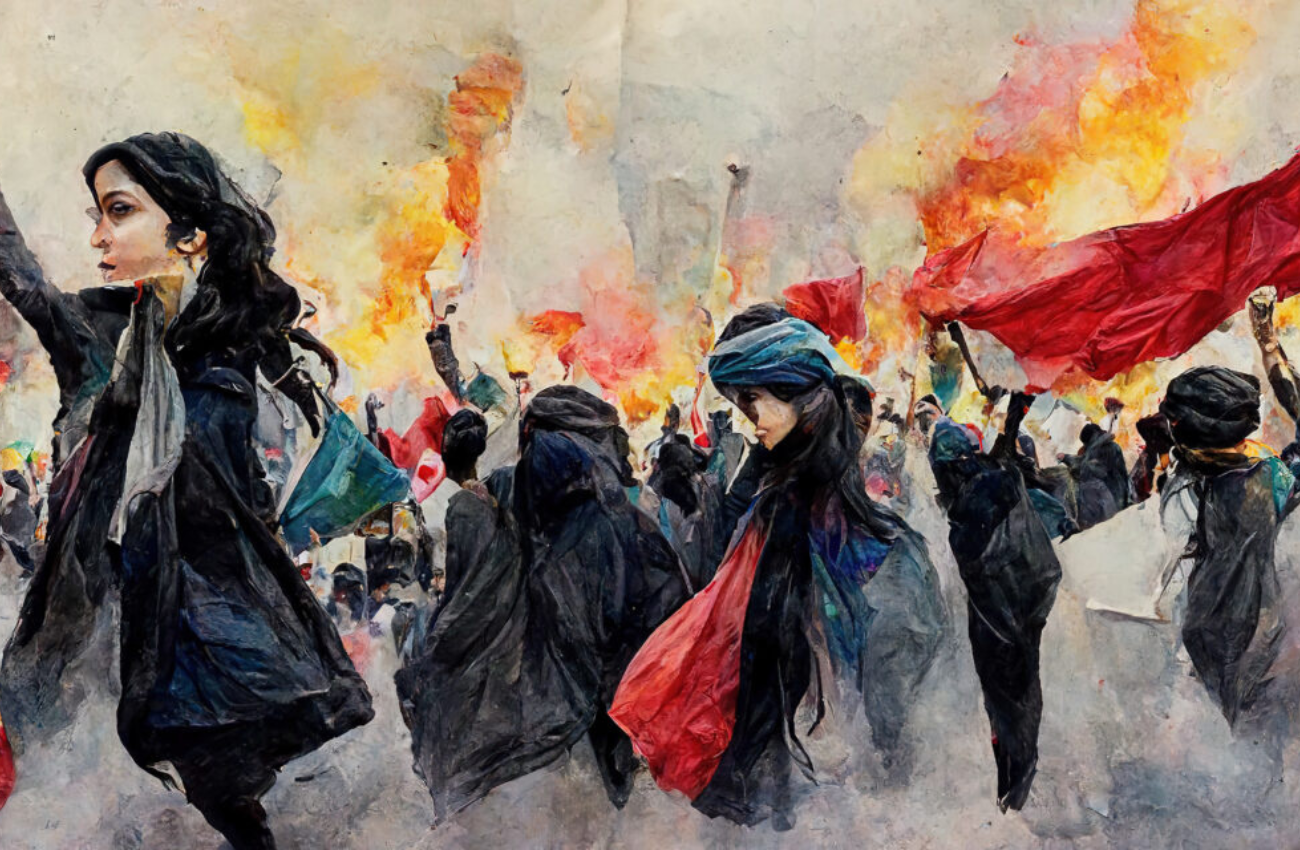People have been protesting across Iran, defying a crackdown by security forces on laws that demands women cover their hair with a headscarf as well as their arms and legs. Despite there being several protests in Iran before, the latest Iran protests are seen to be the most serious challenge to the Iranian authorities in decades and has highlighted the lack of freedom for women. Iran’s protests may well be the first time in history that women have been both the spark and engine for an attempted female-led counter-revolution.
In 2009, millions of people took to the streets of Iran after a disputed presidential election. However, the unrest was limited to major cities and was mainly led by the middle class. Economic hardship triggered nationwide protests in Iran back in 2017 and 2019, but they took place mostly in working-class areas. But now, for the first time, the Iran protests involve men and women from all sections of society and age groups, and has spread across the world, marching under the banner of women’s rights.
The Iran protests are not just an upheaval involving women, it is an upheaval about women and women’s freedom. Across Iran, crowds have shouted the women’s movement chant in both Kurdish “Jin, Jian, Azadi!” and in Farsi “Zan, Zendagi, Azadi!” which means “Woman, Life, Freedom!”, understanding that freedom for women means freedom for all. We outline the Iran protests timeline and everything you need to know about the Iran protests including what is happening in Iran, why it started and how we can help the Iranian women.
What started the Iran Protests?
Iran has been rocked by the biggest protests in years following the death of Mahsa Amini in September 2022.
Mass protests have been taking place across Iran and the rest of the world since Mahsa Amini died after being arrested by the country’s “morality police” on 16 September 2022.
The country’s morality police, tasked with enforcing strict codes around dress and behaviour had arrested the 22-year-old for not wearing her hijab correctly and sporting skinny jeans.
Her family say Amini was beaten and her head struck several times. The government and police have denied the accusations, claiming her death was due to an “underlying disease”.
The first protests took place after Ms Amini’s funeral in the western city of Saqqez, when women ripped off their headscarves in solidarity.
After Amini’s death, the United Nations condemned Iranian officials, saying: “We strongly condemn the use of physical violence against women and the denial of fundamental human dignity when enforcing compulsory hijab policies organised by state authorities.
“We call on the Iranian authorities to hold an independent, impartial, and prompt investigation into Ms. Amini’s death, make the findings of the investigation public, and hold all perpetrators accountable.”
What are the rules for women in Iran?
Article 21 of the constitution as well as a few parliament-passed laws in Iran give women rights such as women are allowed to drive, hold public office, and attend university. But not wearing a veil in public can be punished by law; and when in public, all hair and skin except the face and hands must be covered.
As girls, they are required to wear the hijab upon reaching puberty. As women, they continue to be denied their choice of dress which impacts their right to take part in all aspects of public life including study, work and even leaving their home.
Women have been fighting against compulsory dress code for decades and are now openly defying it as an act of resistance by simply going out to live their lives without the hijab. While the dress code is the most visible form of discrimination, it is just one aspect of the systemic discrimination they face.
Once married, girls and women often face further abuse. Iran’s laws grant husbands significant control over their wives’ lives. Under the Civil Code, the husband has the right to choose where they live and he can prevent his wife from having certain jobs if he deems them against ‘family values’. Under the Passports Law, a woman needs her husband’s permission to obtain a passport and travel outside the country.
In addition, Iran does not have policies in place to prevent domestic abuse, or protect women, and prosecute violence against them.
Who is protesting in Iran?
Iranians of all ages, ethnicities and genders have joined in the demonstrations but it is mainly younger generations of women in Iran who have taken to the streets.
“Women started this wave of protest,” says Ramyar Hassani, spokesman for the Hengaw Organisation for Human Rights.
“But everyone else joined. Women and men are shoulder-to-shoulder. All of Iran is united.”
“For the first time in the history of Iran since the Islamic Revolution, there is this unique unity between the ethnicities. Everyone is chanting the same slogan. Their demand is the same.”
Videos have shown women defiantly setting their headscarves on fire and cutting their hair in public to chants of “Woman, Life, Freedom!” and “Death to the dictator” – a reference to the Supreme Leader, Ayatollah Ali Khamenei.




